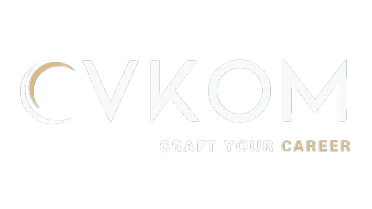This guide emphasizes the importance of crafting a resume that showcases both technical proficiency and a passion for sustainability for environmental and sustainability careers. It provides a step-by-step guide and essential elements to craft a compelling resume that highlights your achievements and aligns with the employer's goals.
How to
Write a Resume for Environmental and Sustainability Careers: A Comprehensive
Guide
Careers in environmental and
sustainability fields focus on addressing pressing global challenges such as
climate change, resource conservation, and sustainable development. A
well-crafted resume for these roles must demonstrate your technical expertise,
passion for sustainability, and ability to drive impactful change. Whether
you’re applying for a position as an environmental scientist, sustainability
consultant, or renewable energy specialist, this guide will help you create a
compelling resume tailored to the sector.
Why
an Effective Resume Matters for Environmental and Sustainability Careers
- Demonstrates Expertise: Showcases your knowledge of environmental policies,
sustainability practices, and relevant technologies.
- Highlights Passion:
Employers value candidates who are committed to creating a positive
environmental impact.
- Emphasizes Technical and Interpersonal Skills: Positions in this field require a mix of technical
proficiency and the ability to collaborate across teams.
- Addresses Current Challenges: Tailoring your resume to reflect awareness of modern
sustainability issues enhances your relevance.
Step-by-Step
Guide to Writing an Environmental and Sustainability Resume
1.
Choose an Appropriate Format
Select a format that organizes your information clearly while emphasizing your expertise:
- Reverse Chronological Format: Ideal for candidates with consistent experience in the
field.
- Functional Format:
Suitable for entry-level applicants or those transitioning into
sustainability roles.
2.
Include a Professional Header
Your header should contain your
name, contact information, and links to relevant profiles or portfolios.
Example:
Jane Green
Email: jane.green@email.com
| Phone: +1-555-123-4567 | LinkedIn: linkedin.com/in/janegreen | Portfolio:
janegreen.com
3.
Write a Compelling Professional Summary
Example (Sustainability Consultant):
"Experienced sustainability consultant with 7+ years of expertise in
corporate environmental strategies and sustainable development. Adept at
conducting carbon footprint analyses, implementing waste reduction programs,
and advising clients on renewable energy solutions to achieve measurable
sustainability goals."
Example (Environmental Scientist):
"Detail-oriented environmental scientist with 5+ years of experience in
ecosystem restoration, water quality testing, and environmental impact
assessments. Committed to advancing sustainable practices through data-driven
research and innovative solutions."
4.
Highlight Relevant Work Experience
Example (Environmental Scientist):
Environmental Scientist
Green Earth Consulting | Jan 2018 – Present
- Conducted environmental impact assessments for 15+
infrastructure projects, ensuring compliance with local and federal
regulations.
- Developed conservation plans for wetland restoration,
resulting in the recovery of 25+ acres of natural habitat.
- Collaborated with stakeholders to implement waste
management programs, reducing landfill contributions by 30%.
Example (Sustainability Analyst):
Sustainability Analyst
EcoSolutions | June 2016 – Dec 2017
- Designed and executed corporate sustainability
programs, reducing energy costs by 20% annually.
- Performed lifecycle assessments for product
development, identifying opportunities for carbon reduction.
- Created educational materials to promote sustainable
practices among employees, increasing engagement by 40%.
5.
Showcase Key Skills
Create a dedicated skills section
that highlights technical proficiencies and soft skills essential for
environmental roles.
Example:
Technical Skills: GIS Mapping, Environmental Impact Assessments, Carbon
Accounting, Renewable Energy Technologies
Soft Skills: Communication, Collaboration, Analytical Thinking,
Problem-Solving
6.
Include Certifications and Training
Certifications add credibility to
your expertise and demonstrate your commitment to the field.
Examples:
- LEED Accredited Professional (LEED AP)
- Certified Environmental Professional (CEP)
- Greenhouse Gas Inventory Specialist (GHG-IQ)
7.
Highlight Education and Relevant Coursework
List degrees and relevant coursework
that align with your desired role.
Example:
Master of Science in Environmental Science
University of XYZ | Graduated May 2020
- Relevant Coursework:
Climate Change Policy, Renewable Energy Systems, Sustainable Urban
Planning
Bachelor of Science in Environmental
Engineering
University of ABC | Graduated May 2018
8.
Add a Section for Projects and Initiatives
Include details of significant projects where you’ve made an environmental or sustainability impact.
Example:
Key Projects:
- Carbon Reduction Strategy for Urban Development: Developed a comprehensive strategy for a city council,
achieving a 15% reduction in emissions within three years.
- Renewable Energy Feasibility Study: Conducted technical and financial assessments for
implementing solar and wind energy solutions in a rural community.
9.
Incorporate Metrics to Demonstrate Impact
Use quantifiable achievements to
highlight your contributions.
Example:
- "Reduced water consumption by 25% through the
implementation of rainwater harvesting systems across three industrial
facilities."
- "Increased recycling rates by 40% in a corporate
office through employee education and process optimization."
Additional
Tips for Environmental and Sustainability Resumes
- Tailor for Each Role:
Customize your resume to align with the specific job description and
employer’s goals.
- Use Action Verbs:
Start bullet points with verbs like "Implemented,"
"Designed," "Conducted," or "Optimized."
- Keep It Concise:
Limit your resume to one or two pages while emphasizing relevant details.
- Proofread Carefully:
Ensure your resume is free from grammatical errors and properly formatted.
Example
Resume for Environmental and Sustainability Careers
Jane Green
Email: jane.green@email.com
| Phone: +1-555-123-4567
LinkedIn: linkedin.com/in/janegreen | Portfolio: janegreen.com
Professional Summary
"Passionate environmental scientist with 6+ years of experience in
ecosystem restoration and climate change mitigation. Skilled in conducting
environmental impact assessments, developing sustainable solutions, and
collaborating with cross-functional teams to achieve measurable results.
Dedicated to driving global sustainability initiatives."
Experience
Environmental Scientist
EcoRestoration Solutions | Jan 2018 – Present
- Conducted site assessments and designed restoration
plans for degraded ecosystems, restoring 50+ acres of wetlands.
- Collaborated with local governments to develop policies
supporting sustainable agriculture practices.
- Analyzed air quality data, leading to recommendations
that reduced industrial emissions by 15%.
Sustainability Intern
XYZ Corporation | June 2016 – Dec 2017
- Supported the implementation of a company-wide waste
reduction initiative, cutting landfill contributions by 30%.
- Conducted research on renewable energy technologies,
presenting findings to senior management.
Skills
Technical Skills: GIS Mapping, Environmental Impact Reporting, Renewable
Energy Analysis
Soft Skills: Problem-Solving, Team Collaboration, Communication
Certifications
- LEED Green Associate
- Certified Energy Manager (CEM)
Education
Master of Environmental Science
University of XYZ | Graduated May 2020
Projects
- Clean Energy Transition Plan: Assisted in designing a roadmap for a city’s
transition to renewable energy, targeting 80% renewable adoption by 2030.
- Community Recycling Program: Launched an initiative that increased recycling
participation by 50% in a suburban community.
Why
Choose CVKOM for Your Resume?
At CVKOM, we specialize in
creating resumes tailored to environmental and sustainability careers. Our
platform offers:
- Customizable Templates: Designed to showcase technical skills and measurable
achievements.
- AI-Powered Suggestions: Tailor content for specific sustainability roles.
- Proofreading Tools:
Ensure clarity and professionalism.
- ATS Optimization:
Enhance your resume’s compatibility with applicant tracking systems.
Conclusion
A standout resume for environmental
and sustainability careers highlights your technical expertise, measurable
achievements, and passion for driving change. By tailoring your resume to the
role, using metrics to demonstrate impact, and including relevant
certifications, you can position yourself as a top candidate. Let CVKOM
help you craft a professional resume that aligns with your vision for a
sustainable future.
Start building your
sustainability-focused resume today with CVKOM—where purpose meets
opportunity!




